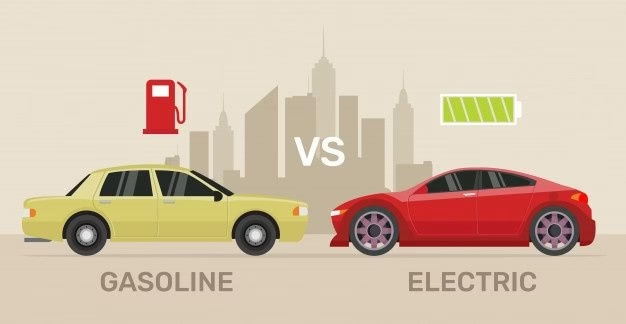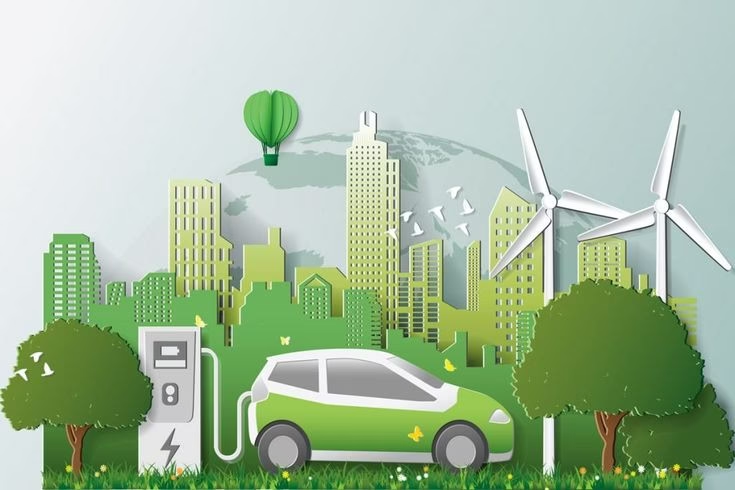
Switching from an internal combustion engine (ICE) car to an electric vehicle (EV) can be an exciting yet daunting decision. The transition often involves unlearning old habits and adapting to new ways of thinking about your daily driving, refueling, and overall car maintenance. If you’re considering making the switch, here are the top five tips to help you transition smoothly into the world of EVs.

1. Understand Your Driving Needs
Before buying an EV, take the time to analyze your driving habits and needs. This step will help you choose a vehicle that aligns with your lifestyle.
- Daily Commute and Range: Calculate how many miles you drive daily, including trips to work, school, or errands. Most modern EVs offer ranges between 200 to 400 miles on a single charge, which is sufficient for the average driver.
- Occasional Long Trips: If you frequently embark on long journeys, consider an EV with a higher range or research charging stations along your typical routes. Alternatively, a plug-in hybrid electric vehicle (PHEV) might suit you better.
- Weather Considerations: Be aware that extreme weather can impact an EV’s range. Cold weather, for instance, may reduce range due to increased energy demands for heating.
2. Research Charging Options
One of the biggest differences between ICE cars and EVs is the way you “refuel.” Understanding EV charging infrastructure is crucial.
- Home Charging: Installing a home charging station (Level 2 charger) is highly recommended for convenience. While you can use a standard wall outlet (Level 1 charging), it’s much slower and better suited for overnight charging if your daily mileage is minimal.
- Public Charging: Familiarize yourself with public charging networks like Tesla Supercharger, Electrify America, or ChargePoint. Many apps, such as PlugShare, can help locate nearby charging stations.
- Charging Costs: Charging your EV at home is generally cheaper than filling up an ICE vehicle with gas. Look into your local electricity rates, time-of-use plans, and any potential incentives for EV owners.
- Speed of Charging: EVs support different levels of charging speeds. While Level 1 and Level 2 chargers are great for home use, fast chargers (DC fast chargers) are ideal for quick top-ups on road trips. However, frequent use of fast chargers may degrade your battery faster over time.
3. Know the Incentives and Tax Benefits
Governments worldwide offer incentives to encourage EV adoption. Take advantage of these programs to make your transition more affordable.
- Federal and State Incentives: In the United States, the federal government offers a tax credit of up to $7,500 for qualifying EVs. Many states also provide additional rebates, tax credits, or reduced registration fees.
- Utility Company Discounts: Some utility providers offer special EV rates, rebates for home charger installation, or discounted electricity rates during off-peak hours.
- Local Perks: Many cities offer perks such as free parking for EVs, access to carpool lanes, or reduced toll fees.
Research these benefits thoroughly to maximize your savings and offset the initial cost of purchasing an EV.

4. Familiarize Yourself with EV Maintenance
EVs require less maintenance compared to ICE vehicles, but there are still essential care tips to ensure longevity.
- Battery Care: The battery is the heart of an EV. Avoid letting the charge drop below 20% or exceeding 80% regularly unless on a long trip. This practice helps maintain battery health over time.
- Software Updates: EVs often receive over-the-air software updates that improve performance, add features, or fix bugs. Stay up-to-date with these updates.
- Tire Maintenance: EVs are heavier than ICE vehicles due to their batteries. This means tires may wear out faster. Regularly check tire pressure and alignment.
- Brake System: Regenerative braking in EVs reduces wear on traditional brakes. However, periodic brake inspections are still necessary.
- Coolant and Fluids: EVs have fewer fluids to maintain, but the cooling system for the battery and electric motor needs occasional checks.
5. Plan for the Learning Curve
Transitioning to an EV means adjusting to new routines and technology. Give yourself time to adapt.
- Charging vs. Refueling: Unlike gas stations, charging takes longer. Overnight home charging can cover your daily needs, but long trips require planning for charging stops. Apps like A Better Routeplanner can assist with this.
- Regenerative Braking: Many EVs have regenerative braking, which may feel different from traditional brakes. Practice driving to get used to the sensation.
- EV Technology: EVs often come with advanced features such as autopilot, voice commands, and smartphone apps for remote control. Spend time learning and customizing these features to enhance your experience.
- Range Anxiety: Initially, you might worry about running out of charge. Over time, as you understand your EV’s capabilities and charging infrastructure, this anxiety usually diminishes.
Additional Tips for a Smooth Transition
- Test Drive Multiple EVs: EVs vary in design, range, and features. Test-driving several models will help you find the one that best suits your preferences and budget.
- Join EV Communities: Online forums and local EV owner groups are excellent resources for tips, troubleshooting, and news.
- Budget for Accessories: Consider budgeting for accessories like a portable EV charger, a charging station for your home, or floor mats designed for EVs.
- Learn About Recycling and Sustainability: As an EV owner, you’re contributing to reducing emissions. Take it a step further by learning about proper battery recycling and sustainability practices.

Leave a Reply